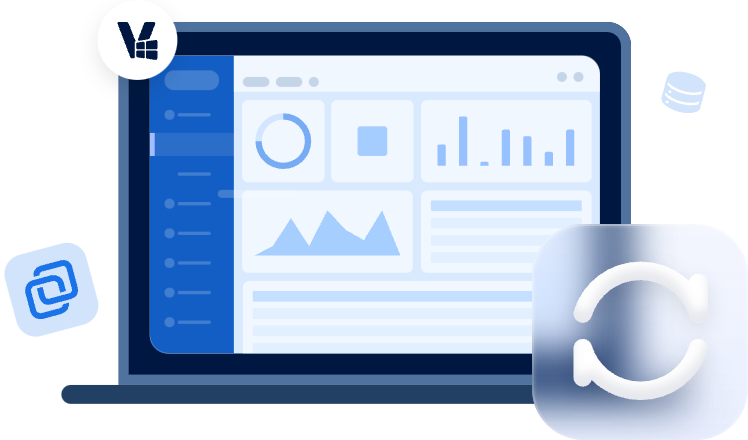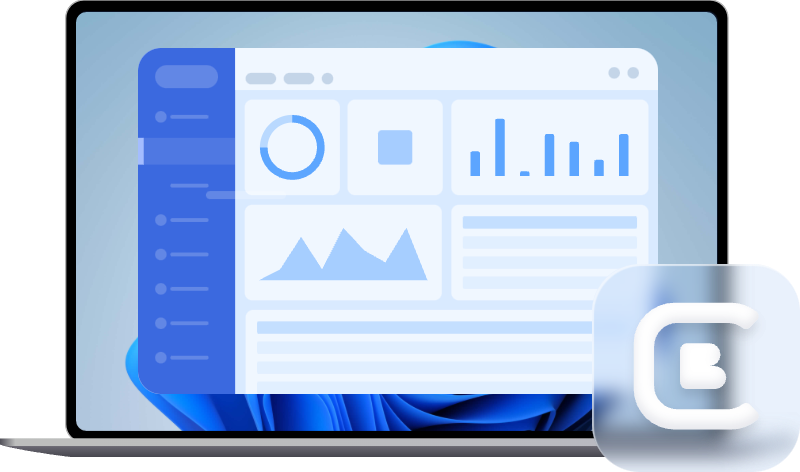Database Backup vs Replication丨From 4 Aspects to Compare
Since you started using computers, you may have generated a lot of data for personal or for work reasons. And you are probably looking for an effective way to protect your data. For example, how to choose from database backup and replication? In this article, I will introduce you the difference between them.
Introduction
If you are trying to look for a good solution to protect your data, for example, database data, you may have heard of database backup and replication. They are both effective data protection ways.
You may know the difference between backup and copy, but do you know what’s the difference between database backup vs replication?
To answer this question, you may need to learn the difference between backup and replication first.
What is Backup
Backup is the most common way to protect large sets of static data for the long term. A Backup is an independent copy of all specified data created by native or third-party software. You can store it on various types of media, locally or offsite, according to the 3-2-1 backup rule, so that in the event of data loss, it can be restored to exactly the same state as when it was backed up.
Backup is different from copy because backup can literally copy everything, but copy and paste cannot.
Advantages and Disadvantages
|
✔Advantages |
❌Disadvantages |
|
Easy to operate and low-cost |
There will be some lagging |
|
Backup process can be automated |
Long backup and restore time |
|
Highly isolated and secure |
Cannot guarantee business continuity |
What is Replication
Replication is one of the important measures for disaster recovery. Replication is the process of continually copying and moving current data from one site to another, so that businesses can quickly perform failover in the event of disaster. There are 2 main types, synchronous replication and asynchronous replication.
Synchronous replication is continuous and real-time. The new data on the primary site will be replicated to another site and override the old data immediately, so that there is no downtime between the point of saving and the redundancy being updated.
However, during asynchronous replication your data will be saved to your primary storage first with a slight delay, before being copied to another site.
Advantages and Disadvantages
|
✔Advantages |
❌Disadvantages |
|
Short recovery time |
High cost |
|
Multiple recovery points |
Complex to operate |
|
Maintains business continuity |
Malware can spread to replicated data |
Database Backup vs Replication: What’s the Difference?
The main difference between backup and replication is the intended use. Backup focuses on restoring data to a specific point in time, while replication focuses on business continuity.
It remains true when it comes to database. With the backup process, what you are creating are point-in-time copies of the database. They are kind of like snapshots, but independent of the original database.
But with replication, what you are doing is building another identical site and constantly copying new changes to that site, so that the databases on both 2 sites are always consistent.
Therefore, their difference can be summarized in 4 points:
- Data updates: Data saved by replication is newer than by backup. Backups are not performed all the time, so the most recent backup may be hours or even days old. Replication, on the other hand, is frequently preformed in minutes, thus minimizes the amount of data lost.
- Recovery time: Recovery time required for replication is shorter than that required for backup. Restoring complete data from a backup can take a long time and with downtime. However, the recovery time for replication can be measured in minutes, providing uninterrupted operations of mission-critical and customer-facing applications after a disaster.
- Cost: The cost of backup is lower than replication. Backup, even offsite, requires only a storage device and space to place the device, whereas replication requires investment and maintenance of another site that is ready to be put into service.
- Data security: Backup is more secure than replication. As data is replicated throughout the system, malware can also be spread to another site via replication. And without adequate backups, it may not be possible to restore to a state free of malware. But with backup you are creating completely isolated copies of the data at a point in time and are therefore safe.
Database Backup vs Replication: How to Choose?
Read this far, you’ve already known what is backup and replication, and the difference between database backup and replication. But to choose between database backup and replication, you may still need to define your needs in addition to understanding both types of data protection measures.
- If you are an individual user or a small-medium sized business with insufficient budget, you just need a data protection measure and does not require a high level of business continuity, then backup may be more appropriate for you.
- If you are a medium-large sized enterprise with a large budget, you have high business continuity requirements, low tolerance for data loss, and a private cloud, then you may choose replication to better protect your data.
Besides that, don't forget that many large enterprises now choose a combination of backup and replication to protect their data.
Updated: Database Snapshot vs Backup
You can check the following table to compare database snapshots and backups from several aspects.
|
|
Snapshots |
Backups |
|
Definition |
A read-only copy of the database at a specific point in time |
A complete copy of the database for recovery |
|
Purpose |
Quick recovery, reporting, and analysis |
Disaster recovery and data retention |
|
Storage |
Typically uses less storage, as it may only store changes (copy-on-write) |
Requires more storage as it copies all data |
|
Performance |
Minimal impact on the live database during creation |
May impact performance during backup process |
|
Use Cases |
Quick access to historical data, testing |
Full system recovery, migration, and archiving |
One Effective Database Backup Software to Protect SQL Servers
There are many ways to auto backup SQL Server databases. However, if you have a lot of databases to manage, then native methods are not as efficient as backup software.
Here I recommend you a professional backup software AOMEI Cyber Backup. It allows you to centrally control all workstations and servers within LAN from a single computer, and remotely back up multiple SQL Server databases on other computers.
Next, I will demonstrate how to create a SQL Server backup task, you can click the following button to start a 30-day free trial.
Installation of AOMEI Cyber Backup
* To properly use AOMEI Cyber Backup, especially if you want to manage multiple computers within LAN, you need to download a backup agent and request control over these computers first.
1. To properly use AOMEI Cyber Backup Trial Edition, especially if you want to manage multiple computers within LAN, you need to access to Source Device > Add Microsoft SQL. Click Already installed proxy and select the proxies you need to add.
Note: If you do not install the AOMEI Cyber Backup Agent program into your computer, please download proxy program to local first.
2. Click "..."--> Authentication to validate the database instance. You can choose Windows Authentication or SQL Authentication. Enter the credentials and click Verify.
Then you can schedule your SQL database backup and restore it to another instance with ease.
Backup and Restore SQL Database via AOMEI Cyber Backup
🔰 Click Backup Task on the left menu bar, then click Create New Task to start create database backup task.
Step 1. Choose backup type as Microsoft SQL Backup, and you could also try VMware Backup or Hyper-V Backup.
Step 2. Select the databases you want to backup and specify a destination to store the backup files.
Step 3. Schedule backup methods and time, then click Start Backup.
🔰 Click Restore to recover the SQL Backup easily.
Step 1. The created backup task will show in Backup Task tab, you can manage or restore it here instead of locating a specific bak file on the disk. Just click ""--> Restore.
Step 2. Select the backup that you want to restore
Step 3. Specify a target location that you want to restore to. You could restore to original/new location.
- "Restore to original location": If you choose the option "Over the database with the same name", the detected database with the same name will be overwritten automatically when restoring. Otherwise, the database with the same name will be skipped.
- "Restore to new location": Select target and specify the name of the new database. You can also modify the storage location.
Summary
It is not easy to choose the most suitable way to protect important business data, especially for enterprises. You may need to compare all solutions according to your own needs.
In this article, I introduced what is backup and replication, and took the example of databases, to explain what’s the difference between database backup vs replication. Hope it could help you.
And if you want a comprehensive backup tool, AOMEI Cyber Backup can be very handy with the features of File-based Backup, System Backup, Disk Backup, Partition Backup, SQL Server Backup, and Sync.






